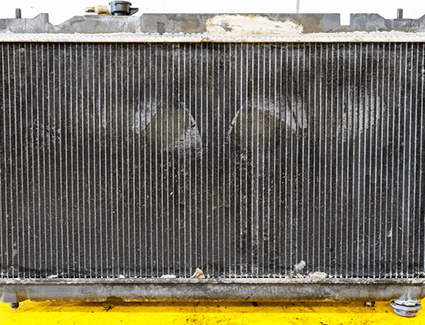Consider These 6 Reasons a Car Engine May Overheat Even After a New Head Gasket Was Installed

Our authorized Volkswagen service center in Houston, TX takes pride in providing every customer and vehicle with the very best. We believe an important part of that is providing information like the following six reasons your vehicle's engine might overheat even after the head gasket has been replaced. Perhaps the most important thing to consider when having major engine work done on your vehicle is where the work is done and who's doing the service or repair. There are a lot of capable independent mechanics as well as many who are questionable. The only way to be absolutely certain that you're getting the very best for your vehicle is to only trust the factory trained and certified technicians at a dealership service center like ours at Archer Volkswagen.


6. Your Engine Has a Leak Somewhere
Major engine work like a head gasket replacement means disassembling much of the engine. If every seal, connection, and component isn't properly inspected and installed, the result could be a leak of coolant, oil, compression, or some combination of these. While a compression leak may not cause the engine to overheat, it will certainly cause a loss in performance. Also, keep in mind that just because you don't see a puddle under the vehicle doesn't mean there isn't a leak.
Replacing a bad head gasket is a big project, and some may be tempted to try some manner of head gasket sealer instead. We don't recommend this. Often, using a head gasket sealer simply won't work and it can even make the problem harder to fix.
5. The Coolant May Be Low
Part of most major engine repairs is draining and replacing the coolant. That's because the coolant must be drained out of the engine for major car repair work like head gasket replacement. If the system wasn't properly filled with the correct coolant, the engine is much more likely to overheat. If you enjoy the benefits of driving a Volkswagen model, be sure to check that the correct type of coolant is used. Some VW models require special G12 coolant that's pink in color. Fortunately, you can find this specific type of coolant available in our VW dealership parts department at Archer Volkswagen in Houston, TX.
4. The Engine May Need a New Thermostat
The engine coolant system is regulated by a temperature valve called a thermostat. The purpose of this is to allow the engine to reach its operating temperature more quickly. Once that happens, the thermostat will open and allow the coolant to flow between the radiator and engine to maintain a consistent temperature. If the thermostat wasn't replaced or tested when a new head gasket was installed, it could cause the engine to overheat.

3. The Radiator
This is that big flat rectangular thing that's typically mounted just behind the grille of your vehicle. The hot coolant from the engine block is pumped through the radiator so that airflow from driving and from the fan can cool things down. One of the more common problems we see with radiators is a buildup of sediment that restricts the flow of coolant through the small channels of the radiator. This is a problem that needs to be diagnosed since there's no visual cues beyond the temperature gauge. Of course, a leaky radiator is also a big problem, but you can usually see the signs of a leaking radiator on the ground.
2. Is the Radiator Fan Working?
Today, most cars have electric fans that serve to keep the radiator cool when the vehicle is sitting still or stuck in traffic. Any number of things can cause problems with the radiator fan from a blown fuse to other electrical problems or even physical damage to the fan. The most common symptom of a bad radiator fan is that the engine temperature will rise when the car is still or stuck in stop-and-go traffic.
1. The Water Pump
This is the part that's responsible for moving coolant between the engine and the radiator. Typically, it's recommended that a water pump be replaced at the same time as a head gasket. That's mainly because of its location. You see, when everything is taken apart for a head gasket replacement, it's much easier to replace the water pump than it is to take everything apart a second time. Also, if an engine has suffered a blown head gasket, there's a good chance that it has enough miles on it to justify replacing the water pump as part of comprehensive maintenance. Because of the labor involved, it's also much more affordable to have the water pump replaced at the same time as the head gasket.



